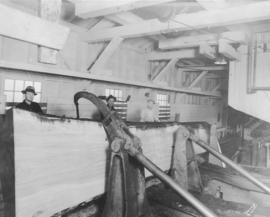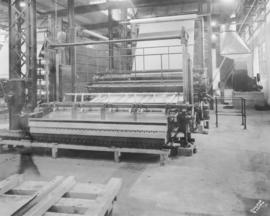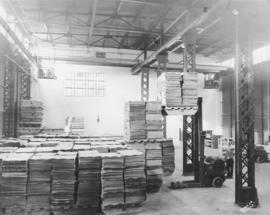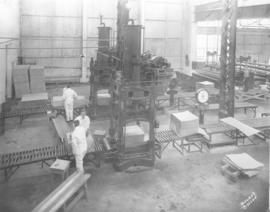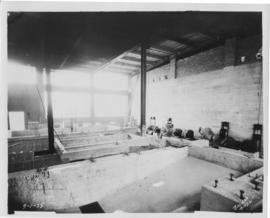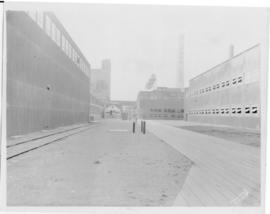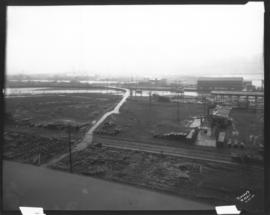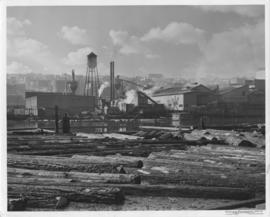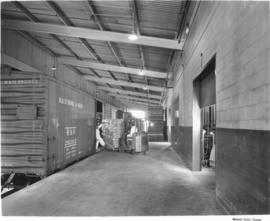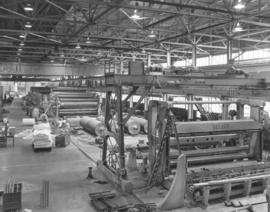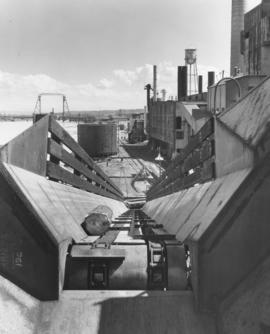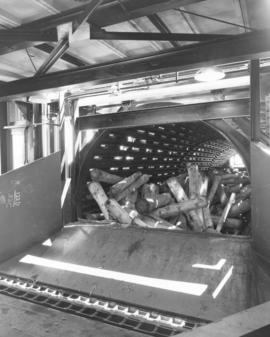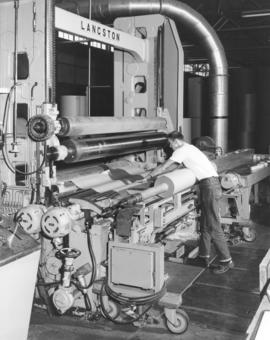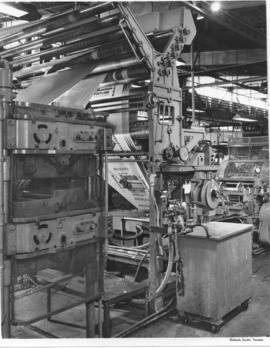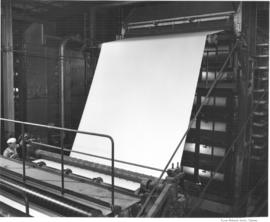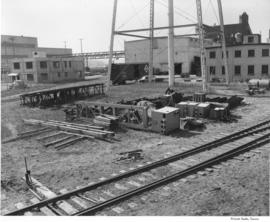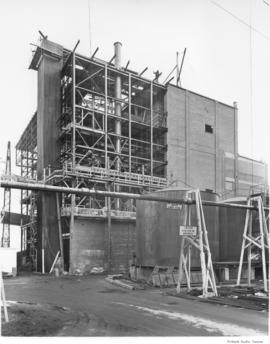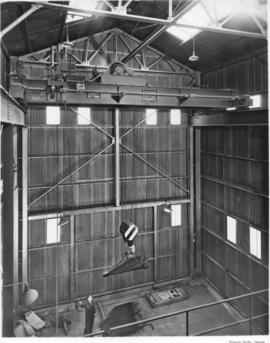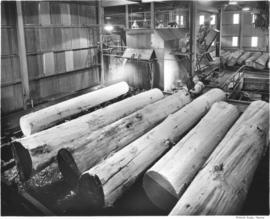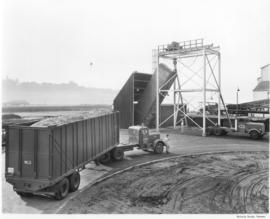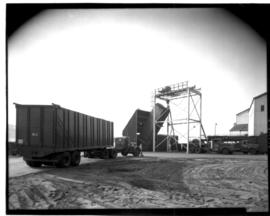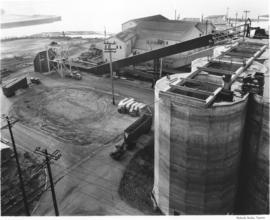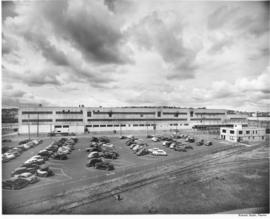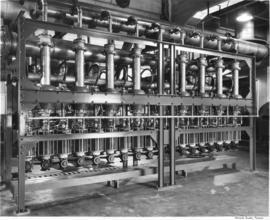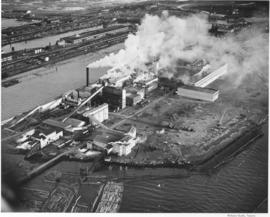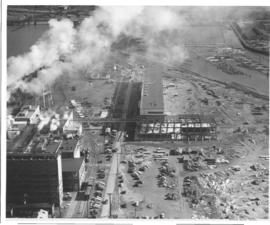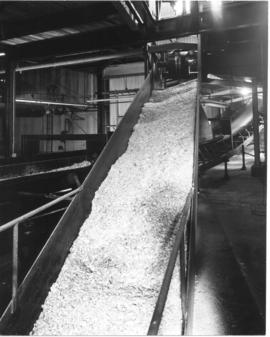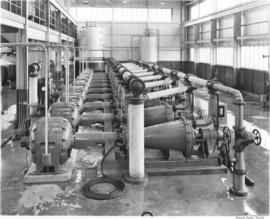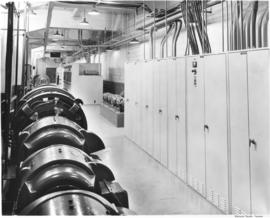- Item
- 1936-12-21
Part of Marvin Boland Photographs
1936 daily operations at St. Regis. Three employees of St. Regis Paper Co. stand behind a large cut log whose bark may have already been stripped. Although the particular St. Regis plant was not identified, this may have been the Tacoma plant located at 801 Portland Ave. The plant had purchased new machinery including machines to bark logs before going to regular pulp chippers and was undergoing transformation into a modern plant. By late November of 1936, the newly modernized Tacoma plant had commenced operations with a crew of 250. Eventually the plant would operate on a 24-hour day with four staggered shifts of eight hours. The modernization allowed for production of 60,000 tons of bleached pulp per year. TPL-2453; G36.1-023 (T.Times 10-14-36, pl 5-article; T. Times 11-25-36, p. 5-article)
St. Regis Paper Co. (Tacoma)--1930-1940; Paper industry--1930-1940; Lumber industry--1930-1940; Logs; Mills--Tacoma--1930-1940;
